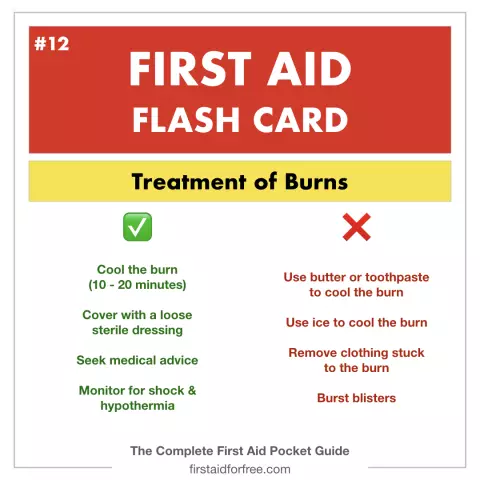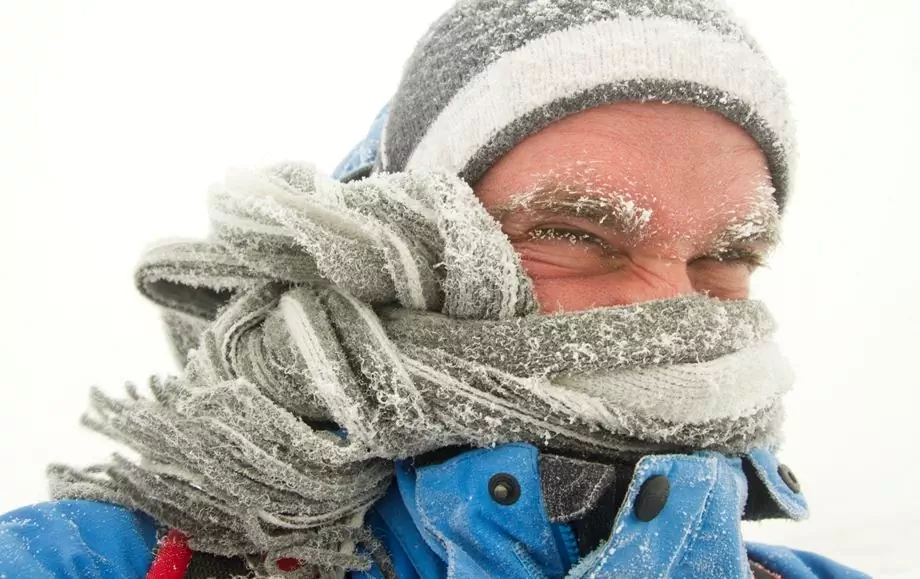- Author Rachel Wainwright [email protected].
- Public 2023-12-15 07:39.
- Last modified 2025-11-02 20:14.
Burn

A burn is tissue damage from exposure to excessive heat, electric current, radiation, or a chemical agent. These traumatic factors have a similar clinical picture, as they cause protein denaturation. In addition to local, the burn causes a general damage to the body, due to the release and ingestion of necrotic decay products from the destroyed tissue into the blood. The general damage to the body caused by a burn is called burn disease. When more than 30% of the skin surface is damaged, an amount of toxic substances enters the bloodstream, causing damage to the life-supporting systems of the body, incompatible with life.
The tissue damage in a burn has three zones:
- zone of necrosis, or scab in the center of the burn, where the impact of the traumatic factor was the strongest;
- paranecrosis zone, or intermediate zone. Here, normal blood circulation stops, and subsequently, if it does not recover, this zone can also become a zone of necrosis, that is, the burn wound can increase after the cessation of exposure to the traumatic factor due to tissue death in the paranecrosis zone;
- zone of hyperemia, on the periphery of the burn. This zone borders on healthy tissue that is not involved in the pathological process. Here the tissues are swollen and stagnant.
Burns
The degree of burns varies depending on the depth of the lesion. There are four degrees of burns:
- First degree burns, or epidermal burns. This degree of burn involves the destruction of only the surface layer of the skin, the epidermis. Clinically, it manifests itself as flushing (redness) of the skin, edema and blistering. Small blisters filled with liquid light serous contents. Despite the fact that the pain can be significant, such burns heal on their own, the skin is restored completely, without the formation of scar tissue. The period of complete healing is one and a half to two weeks.
- Second degree burns, or superficial dermal burns. In this case, not only the epidermis is affected, but also the deeper layers of the skin, however, the affected area is within the dermis. At the same time, serous bubbles are also formed in the necrosis zone, however, denser, tense and extensive. The paranecrosis zone in this case is already outside the dermis, in the subcutaneous fat, therefore, with the death of tissues in this zone, the necrosis extends beyond the dermis and becomes a third-degree burn;
- Third degree burns, or deep dermal burns. With this degree of burn, not only the skin is affected at all depth, but also its appendages, up to the subcutaneous fat. Bubbles of this degree of burn are not characteristic, since the integrity of the dermis is broken, a scab forms in the necrosis zone. The depth of the burn can reach the superficial muscle fascia;
- Fourth degree burns. This is the most severe degree of a burn, in which the direct effect of a damaging agent affects deep tissues of the body: tendons, blood vessels, nerves, muscles, bones, joints, and sometimes internal organs. With third and fourth degree burns, burn disease inevitably occurs, and tissue healing occurs with the formation of scars.
A feature of burns is that the degree of burns, especially deep or extensive injuries, can be established only 48 hours after the injury, since even after removal of the damaging agent, tissue destruction can continue.
Chemical burn

A chemical burn is caused by exposure to a chemical agent that reacts with body tissues to cause destruction. A chemical burn has some features that distinguish it from a temperature or electrical burn.
So, the degree of tissue damage directly depends on the concentration of the chemical, the degree of its activity, as well as the nature of the reaction caused in the tissues. The general rule is that, as a rule, tissue damage in a chemical burn is deeper than it seems at first glance. Each active substance, upon contact with the skin or mucous membranes, causes a specific reaction characteristic of it. And yet, clinical lesions in chemical burns can be grouped into two groups: acid burn and alkali burn.
A chemical burn with acid causes a rapid coagulation of protein in the necrosis zone, thus forming a dense, so-called "dry" scab. In this case, the lesion is clearly delimited from the surrounding tissues due to coagulated tissues.
A chemical burn with an alkali causes colliquation necrosis. The nature of the lesion is such that a dense scab is not formed, but softening, "liquefaction" of tissues occurs, due to which the necrosis zone does not have a clear border, and the damaged tissues "float", and the affected area increases. A chemical burn with an alkali has a less favorable course and prognosis than a chemical burn with an acid.
First aid for burns
A burn is always the result of an accident, so everyone should know the principles of first aid for a burn. Help with burns should be competent, because sometimes a person's life depends on it.
The main thing that needs to be done is to eliminate the influence of the traumatic agent. If a person's clothes are on fire, they must be extinguished. In this case, the burning one cannot run, which often happens in panic, since this only ignites the fire more strongly, and spreads upward, towards the head and respiratory tract. The person must be laid down, and the clothes must be extinguished by throwing on a thick cloth (blanket, coat, etc.) - this will block the access of oxygen and the flame will go out.
First aid for a chemical burn consists in reducing the concentration of the substance that caused the burn by rinsing abundantly with water.
Further actions to help with burns should be aimed at maintaining life in anticipation of the arrival of an ambulance. It is necessary to monitor the breathing of the victim, and, if necessary, perform artificial ventilation.
Burn treatment

Burn treatment can be conservative and surgical. The tactics are determined by the depth and area of damage.
Treatment of first-degree burns consists in local burn therapy, which includes anti-inflammatory and wound healing measures. Pain relievers are prescribed in the form of tablets or injections.
Treatment of second-degree burns consists in the prevention of shock, a biological dressing is applied locally, under which drugs are applied on an ointment basis. An open burn treatment can also be performed.
Treatment of third and fourth degree burns is surgical, and the operation to remove necrotic tissue should be performed as early as possible in order to reduce the ingress of toxins into the blood. Treatment of fourth and sometimes third degree burns involves tissue grafting to close a large tissue defect.
With any degree of damage, the treatment of burns should be urgent, since without the provision of qualified assistance, tissue destruction can continue after injury, and the continued flow of decay products into the blood significantly worsens the patient's condition.
YouTube video related to the article:
The information is generalized and provided for informational purposes only. At the first sign of illness, see your doctor. Self-medication is hazardous to health!






